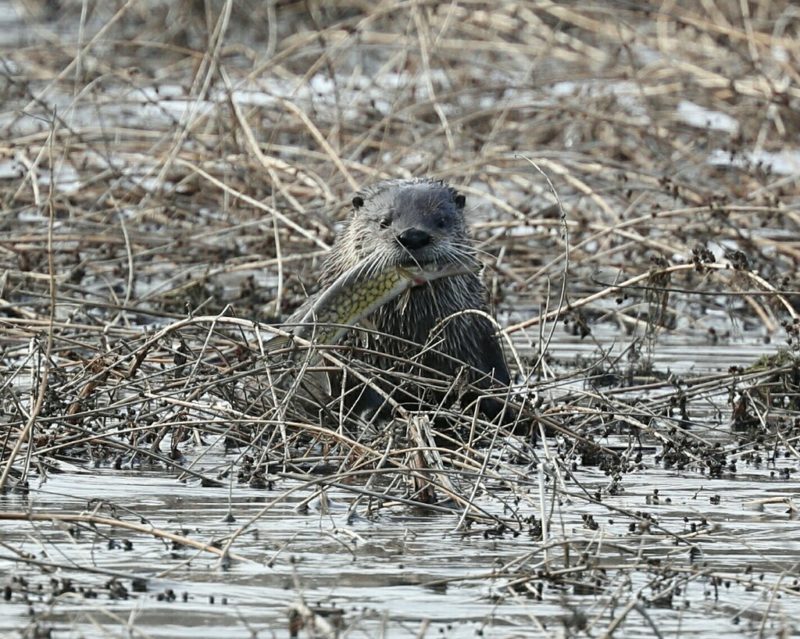River otter sighting at Sawmill in Acushnet shows the power of urban habitat restoration
Last month, a local photographer captured an exciting sight at The Sawmill in Acushnet: the first recorded river otter in this portion of the Acushnet River since the Coalition restored and opened the property as a public park in 2015.

Local photographer Henry Zimberlin captured photographs of this river otter at The Sawmill in January. It was the first recorded river otter at the property since it was restored in 2015. (Image: Henry Zimberlin)
Avid nature photography enthusiast Henry Zimberlin caught the elusive otter on camera. Zimberlin is a regular at The Sawmill and other local natural areas. He frequently takes photos of birds and other wildlife on the river.
“He was very accommodating,” Zimberlin said about the otter in an interview with The Standard-Times. “I was standing on the platform. He just popped up in the grass with a pickerel in his mouth and I watched him eat the whole thing.”
The Coalition worked with the National Oceanic and Atmospheric Administration (NOAA) in 2007 to remove a section of the dam and build a nature-like fishway on the Acushnet River at The Sawmill. This innovative fishway uses carefully placed boulders that mimic the river’s natural form. Not only did this allow more river herring to migrate upstream, but it also improved the flow of water on the river, creating conditions that are more favorable for river otters.
Once home to a large, bustling lumber yard, The Sawmill’s restored river, wetlands, and meadow are now a haven for wildlife in this urbanized area at the edge of New Bedford’s North End. These healthy habitats also help protect clean water in the Acushnet River and downstream in New Bedford Harbor and Buzzards Bay.
The Coalition is hoping to expand The Sawmill later this year by adding two acres on the New Bedford side of its entrance on Mill Road. This expansion will improve public access and safety by providing more parking for cars and buses. It will also create a space for school community gardens, which the Marion Institute will operate as part of its Grow Education program. The New Bedford Community Preservation Committee, which distributes funds through the Community Preservation Act, is currently considering funding this expansion.
River otters were once a rare sight in Massachusetts, but their populations have been increasing due to better wetland conservation and pollution control, according to the Massachusetts Division of Fisheries & Wildlife. Otters are typically found in marshes, lakes, rivers, swamps, and estuaries that provide shelter and a good supply of their favorite food: slow-swimming fish species (like the chain pickerel that The Sawmill’s resident otter was caught eating).
If you’re lucky enough to see an otter, enjoy the sight – but please watch it from a distance. The Sawmill has several river viewpoints along its half-mile loop trail that will allow you to look for wildlife.
What else might you see at The Sawmill? Birds are the most common species throughout the year. Keep an eye to the skies for ospreys in spring and summer and bald eagles in winter. Egrets and herons tend to wade in the river’s shallows, hunting for food. Over in the restored red maple swamp, look for amphibians like frogs and turtles that may be hiding in plain sight.